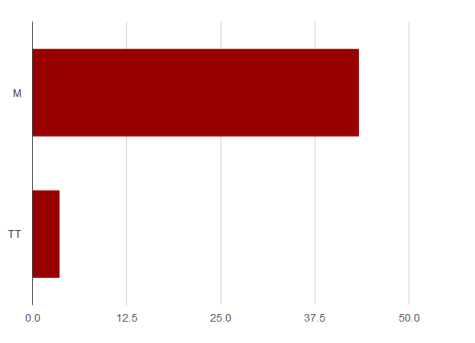Fascinating (and disturbing) New Migraine and Headache Statistics
Last month, The Lancet (a world-renown medical journal) published an article with some new statistics about migraine and headache, from 1990 to 2016. The statistics are troubling as the fight to stop migraine and headache disorders continues around the world.
Researchers used the Global Burden of Disease Study 2016 (GBD 2016) to gain new insights into migraine and tension-type headache in particular. The advantage of using this study is that it has a global focus. It’s true that not every country has equally useful information, but it’s the best estimate we have today.
According to the new study, almost 3 billion people suffered from migraine or tension headache in 2016 (2.93 billion, to be more exact). That’s almost 40% of the world.
Of those, 1.89 had tension-type headache (over 25% of the world’s population) and 1.04 billion had migraine (about 14% of the world’s population).
Statistically, women are more likely to have headaches than men, but they’re a serious problem for everyone. People 15-49 are also at highest risk.
Now, here’s where things get interesting. Researchers had to calculate just how disabling these headaches were, on average. We’ve talked about this before – how both tension-type headaches and migraine are on a scale (it is possible to have a “mild” migraine attack, and a fairly “disabling” tension-type headache. And the two types may have a lot more in common than we once believed.).
But here’s a chart showing the difference.
 As you can see, migraine is generally significantly more disabling than tension-type headache (no surprise there). Here’s what the numbers mean – during an attack, someone with migraine loses 43.4% of their health on average (I know, at times during many attacks it’s much higher – remember, this is an average). For tension-type headache, patients lose 3.7% of their health.
As you can see, migraine is generally significantly more disabling than tension-type headache (no surprise there). Here’s what the numbers mean – during an attack, someone with migraine loses 43.4% of their health on average (I know, at times during many attacks it’s much higher – remember, this is an average). For tension-type headache, patients lose 3.7% of their health.
But look at it this way – what if you lost that much productivity every day? What if you lose that % of your pay each month, or missed that % of your major family events? Even tension-type headache can be quite serious.
Researchers stretched this into YLDs, or years lived with disability (it’s a technical calculation used to estimate the affects of disability – don’t get caught up in the details right now). But first, how much time are people living with these attacks?
Patients who experience tension-type headaches tend to spend 4.7% of an average year with a headache, migraine patients 8.5% of a year.
So, worldwide, migraine caused 45.1 million YLDs in 2016, and tension-type headaches 7.2 million YLDs. That’s a total of 52.3 million YLDs worldwide – accounting for 6.5% of all YLDs from any cause!
If you’re head is spinning from all this, here’s the bottom line. These two issues alone – not even taking into consideration headaches of other types – leads to 6.5% of the world’s disability. That is a huge number, when you think about all the other causes.
Out of the full list, tension-type headache and migraine were both in the top 10 most prevalent concerns (tension-type headache third after after cavities and latent tuberculosis infection). Migraine especially is one of the main causes of disability worldwide. Migraine is among the top causes of YLDs.
The researchers said “any improvements in the efficacy of headache treatments during this period (which saw the introduction of triptans for migraine) have had no detectable effect”. That’s right – no change. (They suggest that one reason is because of lack of worldwide availability of treatments, and the inability to measure lengths of attacks in this study. Fair enough to some extent, especially the second point. If stopping a migraine after 10 minutes is measured the same as 3 hours of agony, we can see how it would be hard to measure the benefits of triptans in this study. Still – no improvement??)
The researchers suggest that treatment of such a huge population will be a massive job – and that perhaps our focus should be on reducing risk.
Researchers also recommend an increased focus on headache care in health care systems, a focus on simple remedies, more resources given to research, and the development of better cost-effective treatments.
There’s a lot to discuss here, and you can read more for yourself in the links below.
I have seen many people helped by quality information, which is why this blog is here. So I know that change and improvement is possible. But there are many, many, who are still not being helped. As the authors of this study put it: Headache is not limited to the high-income part of the world and, unless action is taken, it is here to stay…
